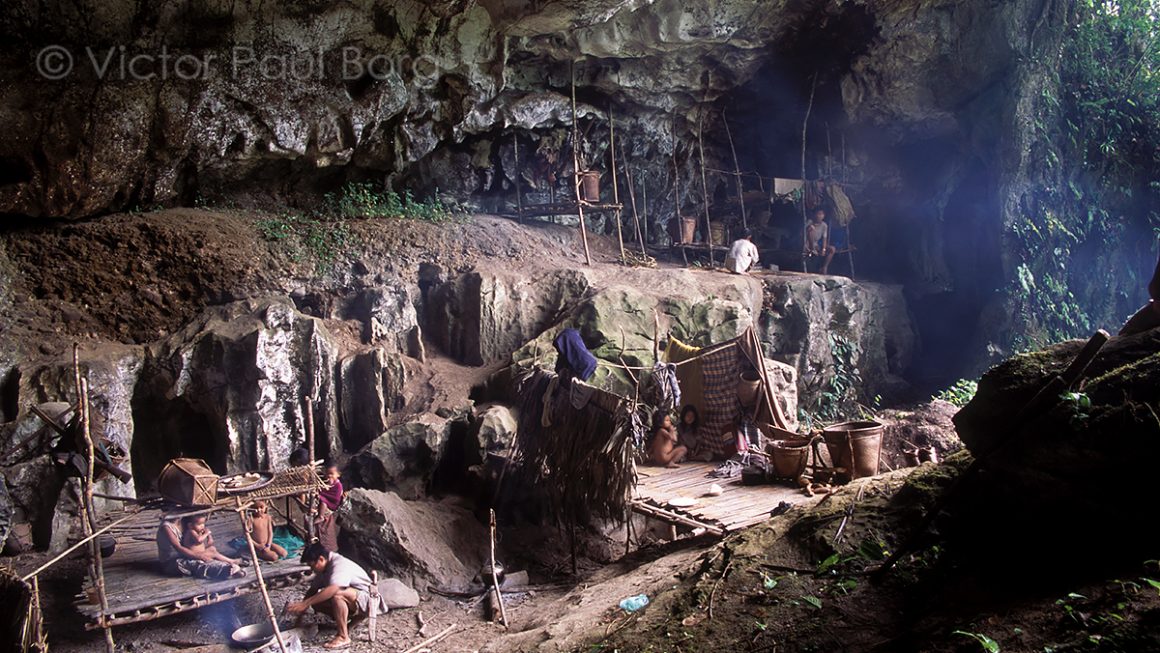Tumyhay, our host at Ugpay Cave, was obsessed about the hidden gold. Some said the bounty, supposedly buried in the caves where the Tautbatu live, amounted to sixty tons. And Tumyhay, prodding me to get digging tools, swore that he had seen some gold that had been retrieved when he was young. This seemed strange for, if they had really found some gold, how could their lives continue to be so bare – a people who live in caves in a crater in the Philippines in conditions reminiscent of the Neolithic?
One thing was sure, however. The decision to seek an outsider’s collaboration to find the gold indicated a mental shift in their estimation of outsiders. Now they are willing to patronize outsiders whenever it suits them, for as long as they are in control, and in Singnapan they are the only ones in command. In 1978, when the Tautbatu were discovered, it had been different with the group of researchers who went to study these outlandish people and their bizarre milieu called Singnapan. The Tautbatu – meaning ‘People of the Caves’ – thought that the newcomers were gold hunters, a perception reinforced by President Marcos personal visit (who decreed Singnapan a National Preservation) and by the archeologists digging in the caves. “They came for the gold,” Tumyhay told me, “but they didn’t find any.”
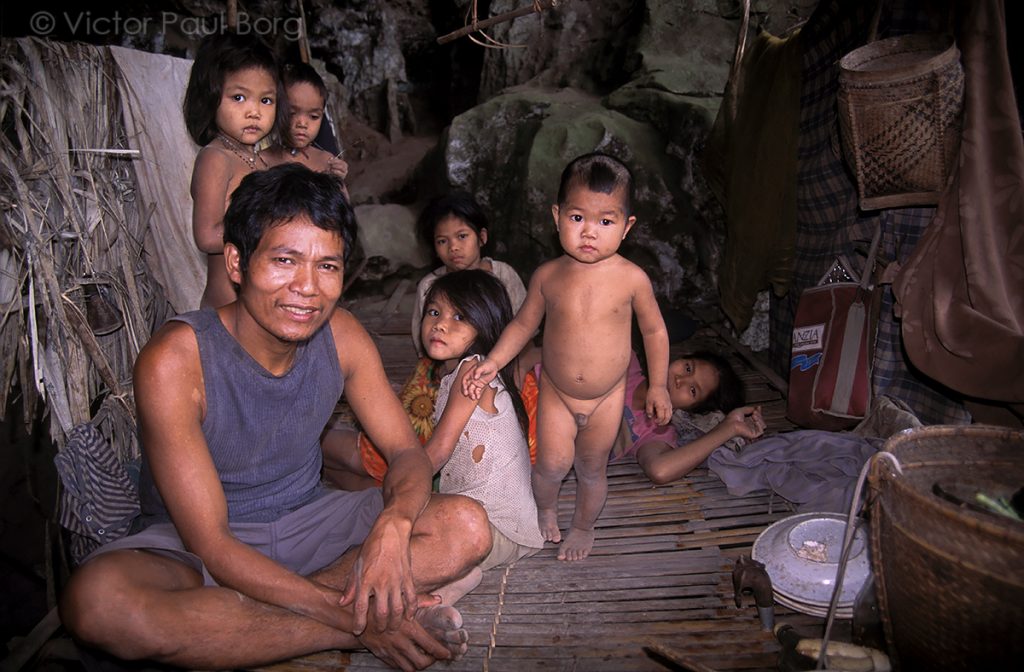
Unbeknown to the researchers, this perception was partly why the Tautbatu had acted evasively and deceptively. Three extended families had even vacated the caves while the researchers trampled around, and Jesus Peralta, the anthropologist group-leader, deplored his subject’s taciturnity and deceit. Their five-month study, he wrote, is “incomplete and preliminary… to a certain degree unreliable due to the artificial conditions created by the presence of a large group of strangers and the Tautbatu’s shock in encountering an alien culture.” The caves on the cliffs, he fretted, “are selected precisely because of their inaccessibility… to avoid contact with others not of their kind.”
The Tautbatu were (and remain) so primitive that the anthropologists lamented that this circumscribed subgroup of Pal’wan natives would be quickly assimilated by the immigrants who began to settle en masse in Palawan in the 1980s. The stunning findings in the caves – prehistoric petroglyphs and burial, Neolithic stone tools – suggested an anachronistic time-warp only possible given Singnapan’s former isolation, an insularity that would no longer be. (Some archeologists speculated that they were a remnant of the first Filipino settlers who arrived from Borneo 50,000 years ago and settled in Tabon Caves 150km north. Singnapan has two tantalizing links with Borneo – same style of petroglyphs, and a species-profile closer to that of Borneo than the rest of Palawan.)
Yet the predictions have not come to pass and now I was in Singnapan to see why and how the Tautbatu’s way of life had survived. Why do they remain in caves, utterly disengaged from the settlers close by? Some, like our guides, have been partly assimilated. Durio had moved out of Singnapan to a farm where he had become a chief, and raised a family of two wives and seven children. And Dumlin, our strongman, was fostered by a Filipino family in return for farm labour; then he returned to cave-living near the village when he married a Pal’wan native. Both spoke the provincial dialect (allowing my partner to communicate with them), and they pestered me for medicine – Durio to cure his broken rib, and Dumlin to alleviate his toothache (although they were also taking native herbal concoctions). But their brethren in Singnapan are another story: most only speak the Tautbatu dialect, and their erratic trade with outsiders is conducted in an atmosphere of tense wariness.
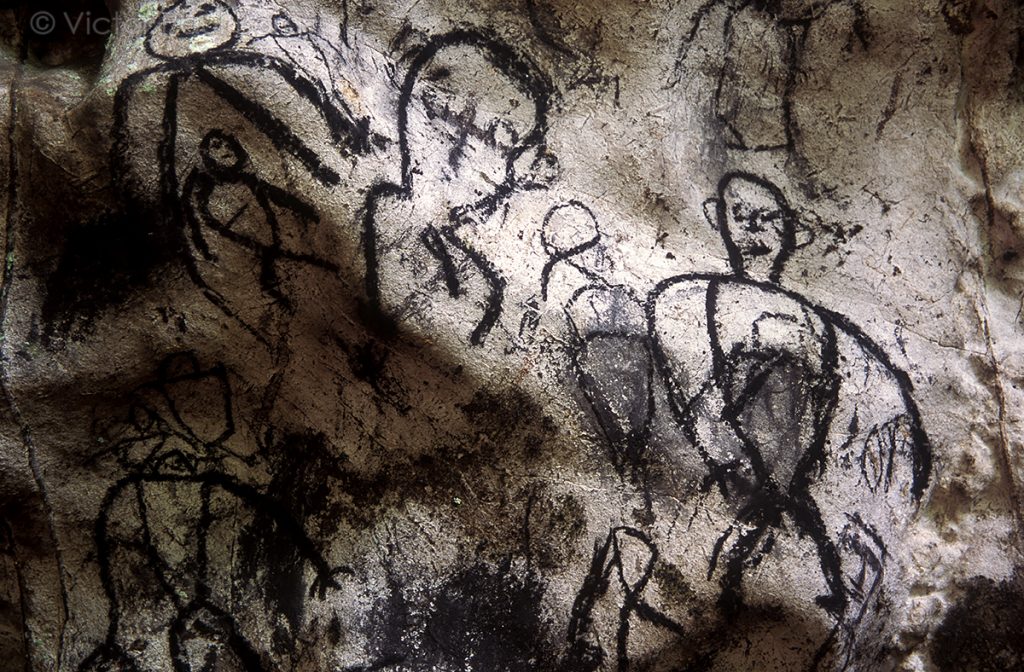
The Tautbatu population, instead of dwindling, has in fact swollen; an increase that could be partly attributed to increased intermarriage with the parent Pal’wan tribe (something that injects genetic diversity). The researchers recorded seven cave-habitations (aside from the three whose inhabitants fled); there are now twenty caves holding a minimum of seven inhabitants each. Additionally, contact with outsiders has improved, largely through Durio’s intermediary role, but it’s a relationship stunted by mutual suspicion. And Filipino’s fear was intense during our visit after three journalists had died in Singnapan five months before. Killed by sorcery or poison, people alleged, and we found Durio consummately distressed, and worried about our “safety” (see sidebox).
Visiting Singnapan is indeed risky. Although less than 10km from the village, the karst terrain – tangled heaps of jagged boulders covered in moss, creepers, and trees rooting in cracks – forced my partner and I to crawl on all fours in places. More treacherous still is climbing the forested cliffs to the caves: a few times the crude scaffolding of bamboo, held together with twine and affixed to cracks, broke under my weight, my fall interrupted by the attentive Dumlin. How I envied the natives’ lightness and agility, most of whom go barefooted, and whose toes are unusually splayed-out for a claw-like grip on the rocks – perhaps another Tautbatu evolution.
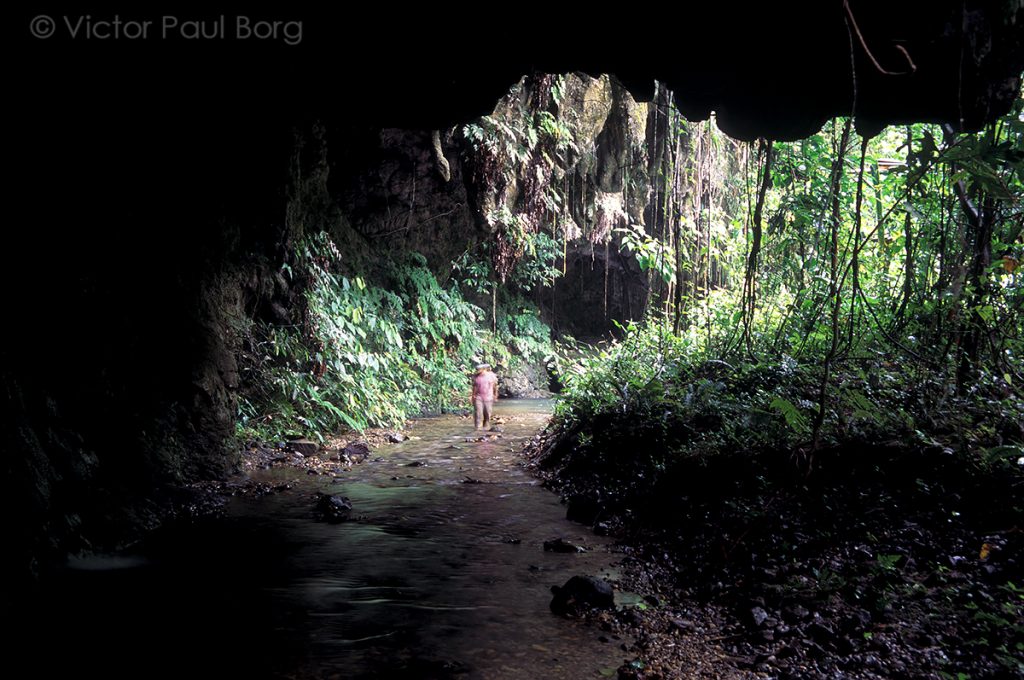
The Tautbatu’s successful adaptation to their habitat is possibly without parallel. This has allowed them to thrive; remarkably, they are the only Pal’wan natives that don’t suffer food-shortages before the annual crop harvest. It’s an evolution largely influenced by the freakily abundant rain – the researchers recorded one metre of rainfall in one month at the peak of the wet season, five times more than the measurements outside the basin. This phenomenon shaped the land: the former river valley, running down from the mountain, has been eroded into a crater riddled with caves. The river then gouged a passage through the mountain – Singnapan means “where the river goes down.” Peculiarly, the clouds keep circling over the basin, unleashing a deluge of water that has made the karst forest extraordinarily rich and diverse. Yet karst forest is scarce in bamboo and palms needed for buildings; and this, coupled with the danger of tempests and flooding, keep the Tautbatu hunkered in caves during the rainy season from May to December, and in summer huts between January to April, when they plant rice, cassava, tobacco, and coffee.
Storms have even taken divine meaning: the believe that thunder and lightning are the creator’s agents, and laughing or shouting during or after a storm amounts to insolence towards the creator. And one of the ancestral epics is about the diluvium: a flood reaching the caves’ level, the people fleeing to the caves, then venturing out in rafts to fetch food, and many of them sinking. So, in these and other instances the Tautbatu beliefs and culture were moulded by the perils in their habitat. Religious beliefs also duplicate and strengthen avoidance of environmental hazards. Multitudes of spirits, animist and ancestral, that roam the forest have to be appeased by diligence and ritual. For example, a hunter who mistakenly kills a long-tailed macaque monkey that is possessed by a powerful spirit is doomed. In each case the allegory is that the forest is a dangerous place, and the cave is a refuge and a cocoon. “We pray for the Unseen’s protection every time we leave the cave,” Durio said. (The Unseen, whose name can’t be invoked, is the creator and possessor of everything.)
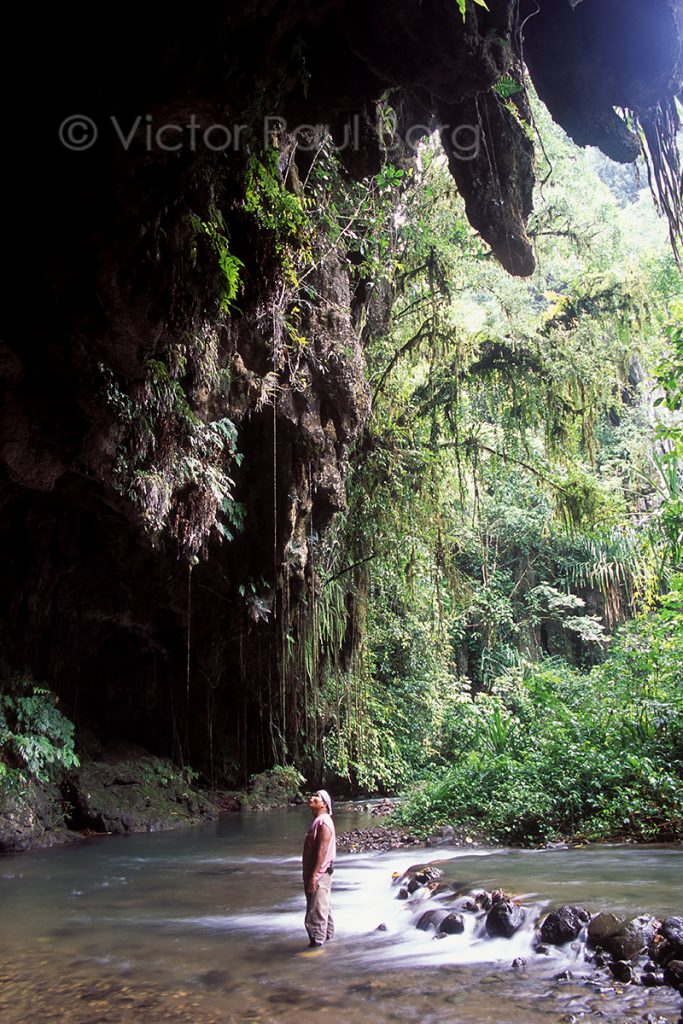
The environmental conditions also explain the social fragmentation: the extended family members that inhabit each cave constitute a closed social unit, and the Tautbatu never developed a sense of larger community with its political and organizational hierarchies. Each cave’s inhabitants are collectively called bulun-bulun. In Ugpay Cave this consists of four nuclei families, each with its raised-platform abode, the largest belonging to the family of Tumyhay, the household leader, and the others housing Tumyhay’s older brother and wife, their son’s family, and their single son. The inhabitants only venture outside for occasional hunts; the diet of rice and cassava is augmented with swifts and bats that also live in the caves, and water is collected from dripping stalactites. Interaction between bulun-buluns is largely limited to marriage – which takes place to a well-defined exchange, the bride’s parents getting “two plates, a sarong, and a machete to compensate them for the girl’s upbringing”. Each bulun-bulun controls a piece of adjoining territory for hunting, gathering, and cultivation – and members of other bulun-buluns cannot stray into others’ territories without permission (which is communicated by hoots, perhaps a remnant of their former mono-syllabic language). The tenuous relationship between bulun-buluns, Peralta wrote, follows “no clear organizing principle other than that of kinship structure.”
Ugpay Cave, seventy metres up-cliff, was intensely studied in 1978. It holds the most profuse petroglyphs and it yielded Singnapan’s oldest dateable human detritus, 900 years old. The petroglyphs, animal and human figures drawn in charcoal, cast an enchantingly eerie presence. The inhabitants told the researchers they were “children’s scribbles”; they told us they were made by the “ancestors”, but they still weren’t ready to divulge the paintings’ meaning – they claimed they “mean nothing.”
Such reticence and deception, I thought, are defense mechanisms that have allowed their culture to survive in limbo, insulated from outside influences (it also helps that the perilous habitat keeps outsiders away). Their explanations often boiled down to “the ancestors”. The ancestors had established a rigid system of social codes and taboos, all designed to avoid conflict, preserve resources, and engender health – for example, it’s prohibited to defecate or urinate in the caves or in the river. I also got nowhere when I tried to plot their family histories; the random ages they claimed didn’t match up, and they didn’t want to state the names of their kin who lived in other caves as it’s forbidden to invoke someone’s name away from his presence.
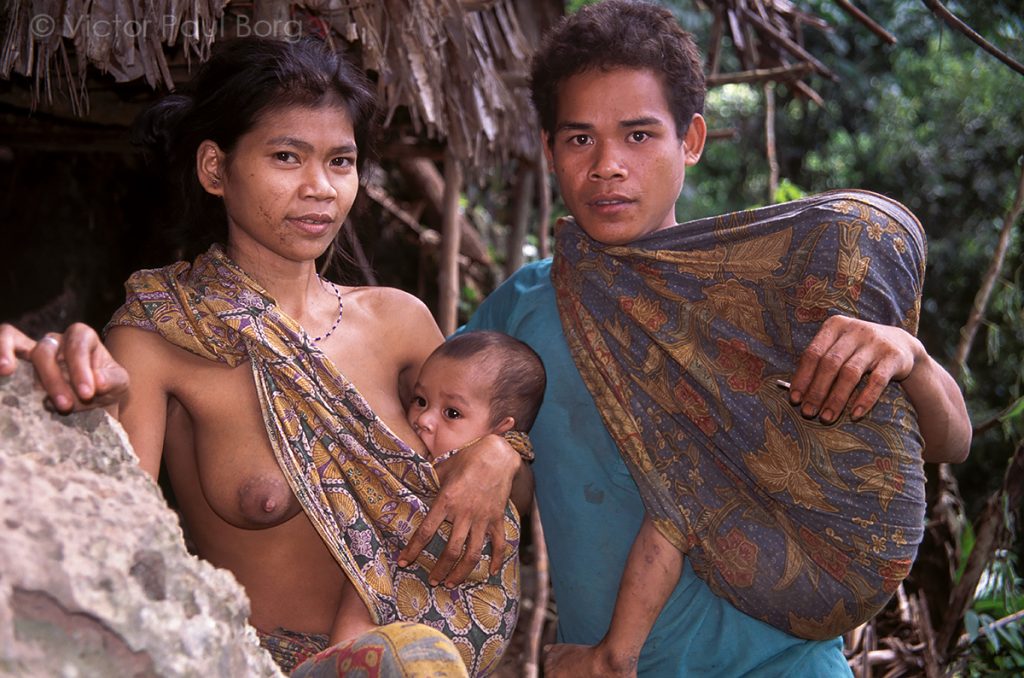
I wondered how their perception of me influenced what they revealed. They were already imagining the money they would make from visitors enticed by my writings. Tumyhay said we were “the first outsiders ever to sleep with the Tautbatu in the cave.” That appears to be true, but Durio lied to us about the missionaries at first. The missionaries visit erratically, gaining a reception by gifts and medicine, and Durio told us that the Tautbatu worship the Christian god – then later changed his story, saying “we continue to believe in what we have always believed.” The missionaries’ attempt to build a chapel was flatly rejected, an illustration of the complete cultural intransigence that saved the Tautbatu – for their culture is so tuned to their environmental conditions that any loosening would diminish their ability to subsist and live harmoniously. The only distinct cultural change is that no man has more than two wives now.
The material changes since 1978 are also limited. Tattered clothes have superseded bark cloth; they have some kitchen implements; all men have machetes, and some have watches and airguns. But the watches don’t work, and they can’t always afford lead-shot for their guns, so in many ways they remain reliant on their old ways – hunting with blowgun and spear, starting fires with flint-stones, smoking tobacco in dried nipa leaves.
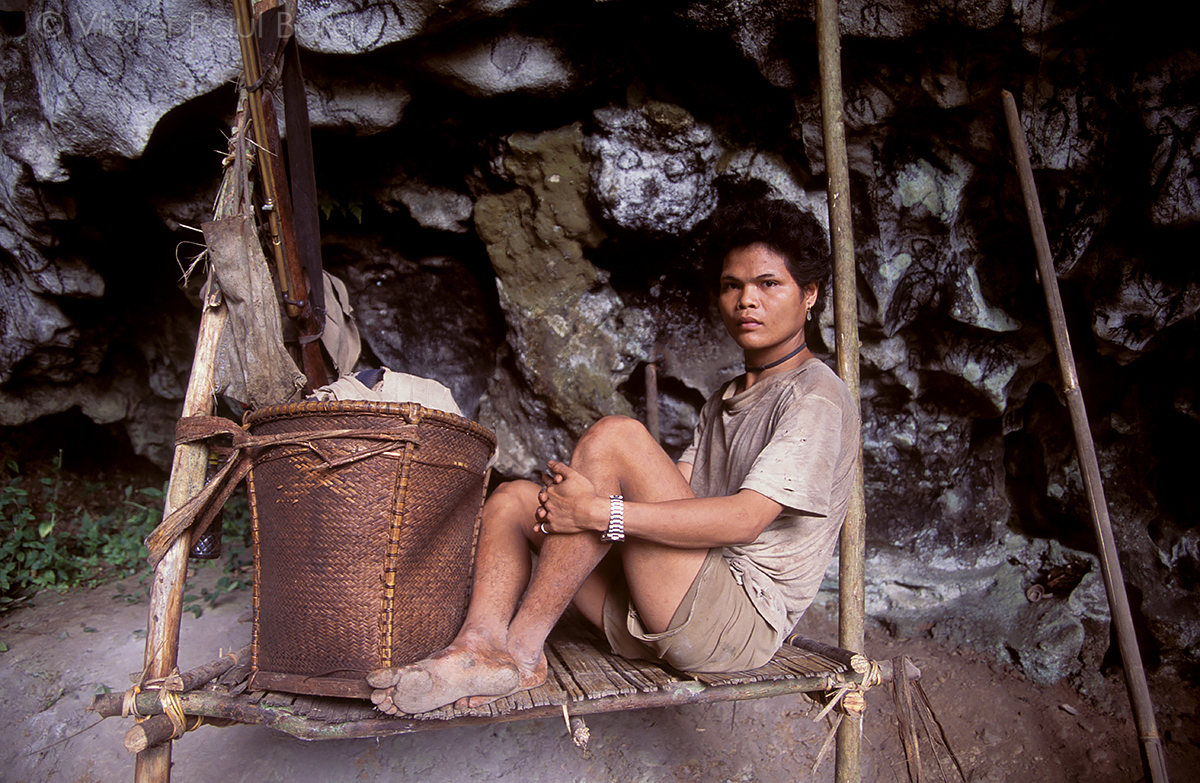
Inexplicably, they refused to show me a cave internment. The custom is to dress the corpse (avoiding red or black, symbols of thunder and clouds), then wrap it in a matt of bamboo alongside personal possessions, and place it deep inside the cave. Such internments are prehistoric in style; the question is how far back the Tautbatu go. Peralta wrote: “Paleolithic-type tools support speculations of a connection with an earlier period yet to be defined by additional data.” No more archeological work was conducted, and my speculation was titillated by Dumlin’s return to the cave. He had lived in a house, and now lives outside Singnapan where there are no extraneous environmental factors that make a cave-home advantageous. Yet he embedded a built-house inside a cave, and waddling in the mud at the entrance I realized that his house would have been better on drier ground some way off. Why continue to live in damp chilly caves? “It’s the life our ancestors taught us”, or, “It’s the life we know” – I always got the same answers. It’s the same total insularity again, an immutable ethos etched into their memory over hundreds or thousands of years, something that made Dumlin proud of his horribly dank home.
Sorcery and Violence
“It was malaria that killed the journalists,” told me Dr Ray Angluben, a malaria expert. “But the strange thing is that on admission to hospital repeated tests for malaria were negative. Only in the autopsy was malaria recorded – so magic could have prevented malaria from showing up before death.”
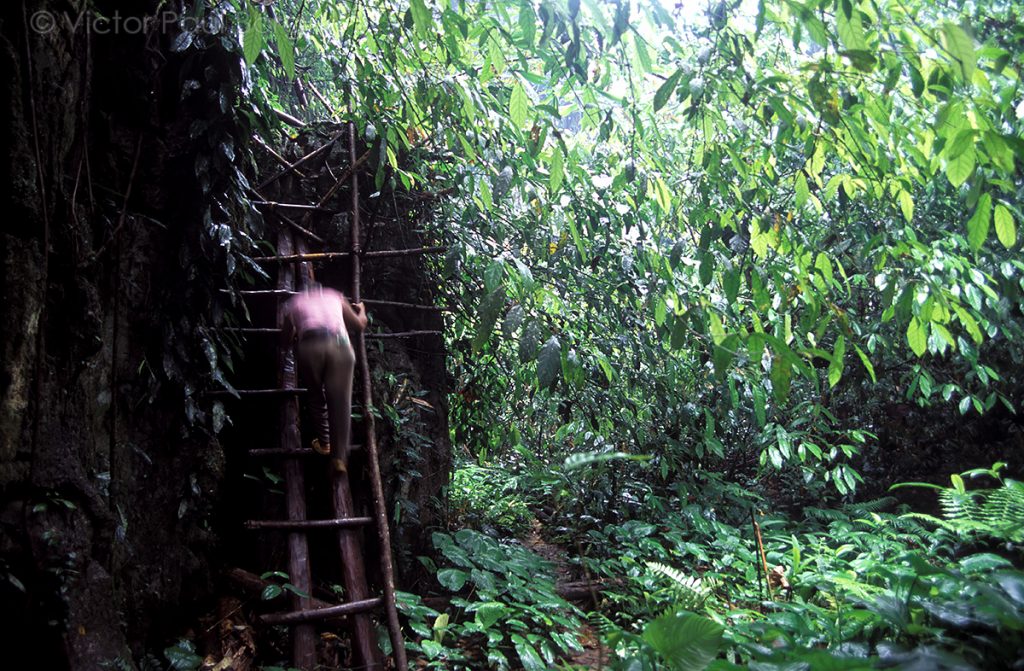
It’s also improbable for three individuals to contract malaria simultaneously; in one week in Singnapan we did not encounter a single mosquito. The Tautbatu’s take is that the journalists’ insolent behavior incurred them a death curse from the spirits.
The incident had intensified the Tautbatu’s reputation for sorcery and violence. There is some truth in this: a common murder in the mountains is spiking someone’s coffee with poison. There are also larger territorial conflicts: the immigrants, who have plundered much land, fear retribution from the Tautbatu or their spirits, while the Tautbatu feel an existential threat from the immigrants’ voracity. I had seen the mutual suspicion in the village – the Tautbatu acting tetchily and evasively, and the tricycle drivers refusing to give them rides.
Other visitors had also perished, including an American couple presumably murdered for their possessions. The journalists and the Americans had taken an outsider as a guide; and, at a place where the natives are territorial even among themselves, that represents an intrusion and an affront. (Once, in the forest, we heard hoots all around us, coded communication – they had heard foreign voices and were laying an ambush – but when Durio shouted loudly the hoots ceased.)
The Tautbatu are scared of outsiders, and it’s a small step between fear and violence. Durio was worried in reverse: that he would be attacked by the villagers, and he was preparing for the eventuality by magical incantation. They have several such incantations, including one that neutralizes snake venom. “Tumyhay,” he told me, “is now teaching me an incantation that would deflect bullets fired at me.”
© Victor Paul Borg. This article was first published in the magazine of Britain's Royal Geographical Society.

